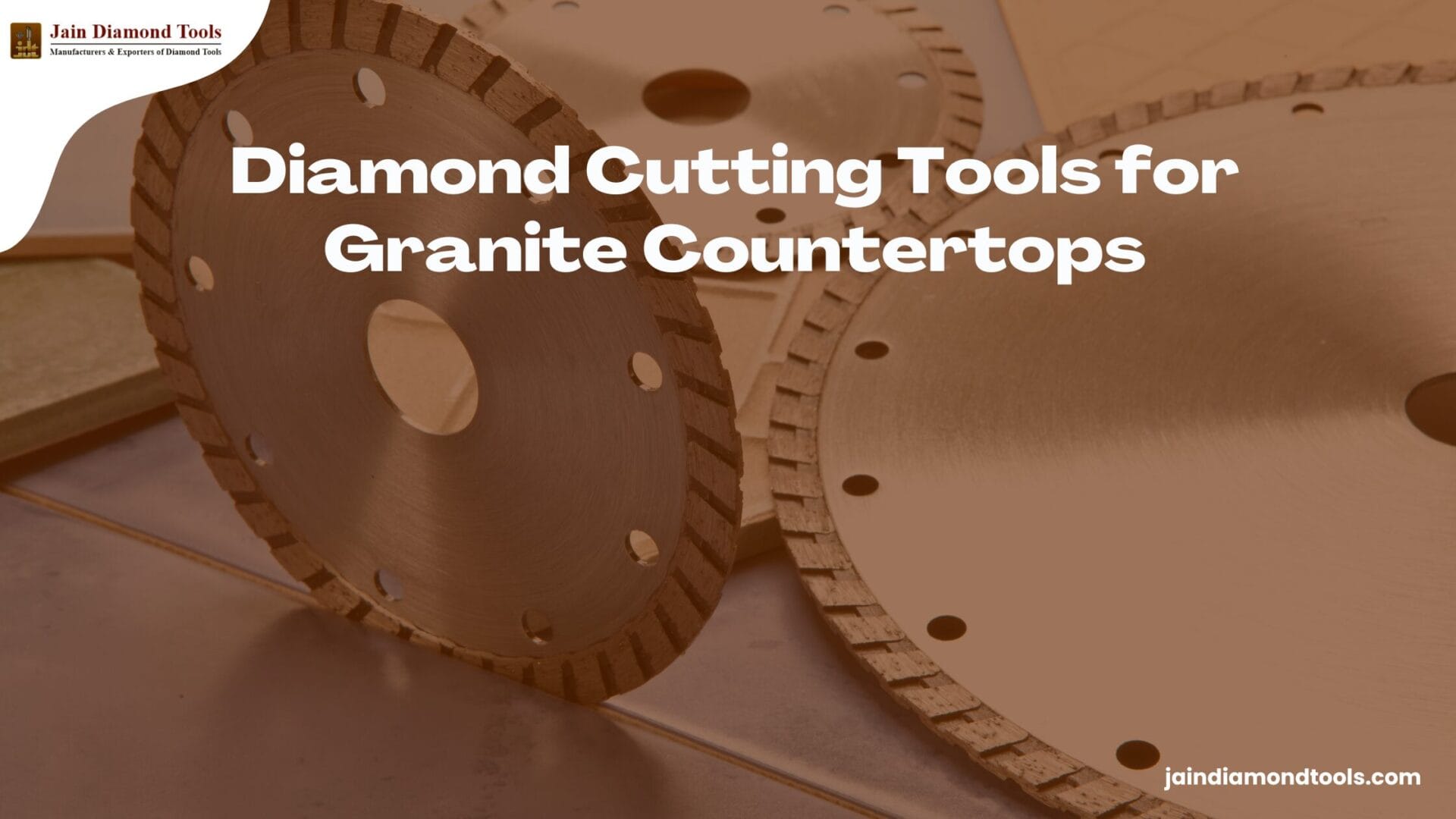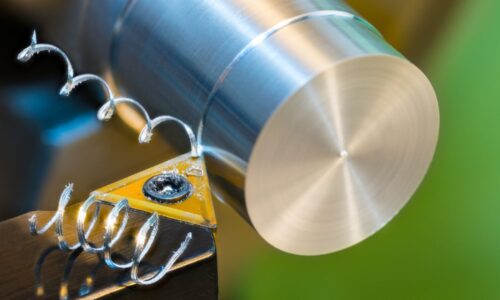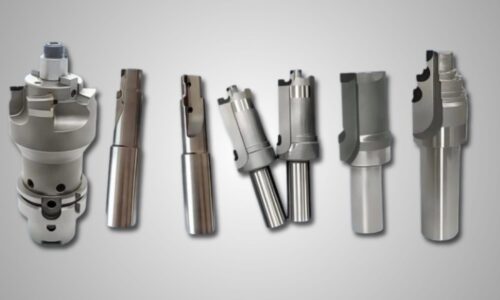
Top 5 Diamond Tools for Concrete Cutting and Drilling
- By akshada
- Posted on
Granite countertops have become the most popular choice in kitchens and bathrooms. They last very long, are elegant and are are also resistant to heat as well as scratches. Due to its hardness and density, cutting granite requires special tools. In this article, we’ll look inside the world of diamond cutting tools for granite countertops—the types, advantages, and best practices when using such equipment.
Understanding Granite: A Material Overview
Granite is an igneous rock with a major content of quartz, feldspar, and mica, which gives it a high strength combined with beauty. Because the structure of granite is crystallized, it is resistant to corrosion or wear and tear, and this makes it a very popular material for countertops in busy zones. But exactly this hardness creates a problem when cutting and shaping granite.
Characteristics of Granite
- Hardness: Granite is one of the hardest materials available for countertop surfaces, averaging a score between 6 and 7 on the Mohs scale. This level of hardness requires tools composed of harder materials, such as diamond, to execute cuts properly.
- Variety: Granite is offered in a variety of colors and patterns; each type has various mineral compositions and levels of hardness. Hence, variation affects the way cuts are executed and what tools are used.
- Durability: Granite is highly resistant to heat, scratches, and stains. That’s one of the reasons it is so popular.
- Maintenance: Although granite is very low maintenance, it does require periodic sealing to avoid stains and keep it lustrous.
Why Use Diamond Cutting Tools for Granite?
Diamond cutting tools meet the unique requirements that granite imposes. Therefore, Diamond abrasives in cutting tools offer precision, efficiency, and durability. Here’s why diamond tools are a must for granite countertop work:
1. Precision and Clean Cuts
The precision when cutting granite is unmatched through the use of diamond cutting tools. Once using this tool, clean edges with minimal chipping will be achieved, hence giving a wonderful result or outcome in installations, especially those around sinks and edges.
2. Durability and Longevity
Diamond tools are longer lasting compared to the traditional tools. They remain harder, opposed to the losses in sharpness associated with the traditional tools. This means that fewer tool changes should be expected, as well as lowering costs over the long term.
3. Versatility
Diamond tools are used to cut, drill, grind, and polish granite for a variety of purposes. This multi-purpose characteristic makes them indispensable to contractors and DIYers alike.
4. Reduced Dust and Cleanup
Diamond tools, especially wet cutting methods reduce dust generated hence keeping the working place cleaner and workers safer from the danger of inhalation of dusts.
Types of Diamond Cutting Tools for Granite Countertops
1. Diamond Blades
The diamond blades provide a backbone for cutting large granite slabs into manageable forms. A steel core is found on which diamond segments have been welded or attached at the edge. In your efficiency and quality of cuts, the diamond blade you use can influence significantly.
Types of Diamond Blades
- Continuous Rim Blades: The edge of continuous rim blades is smooth and continuous. They are suitable for cutting without chipping off when making cuts. They suit straight cuts in big granite slabs.
- Segmented Blades: These blades have segments that distinguish between them. They cut faster than the continuous blades. Their applicability is for rough cuts and thick granite.
- Turbo Blades: Turbo blades are edged with serrations, which assists in aggressive cutting, and they work with a variety of both wet and dry-cutting applications. They make a pretty good trade between speed and finish.
Selecting the Right Blade
Select the best diamond blade for granite based on the following considerations:
- Blade Diameter: Blanks come in diameters ranging from 4 inches to 16 inches depending on the size of your cutting tool and the constraints of your job.
- Size: It impacts cutting speed and quality of finish. A larger grit such as 30-50 is utilized for rough cuts, while a smaller grit such as 100-200 is used for polish.
2. Diamond Core Drills
Core drills made of diamond mainly are used especially to drill holes on granite countertops and thus optimum for plumbing fixtures, sinks, and others for installing.
Types of core drills
- Wet Core Drills: These drills use water for cooling and hence do not tend to overheat; the dust also minimizes as it makes use of water. These are apt for granite drilling and provide holes that are smooth.
- Dry Core Drills: In instances where it is difficult to utilize water, dry core drills will be able to complete the task of making holes through granite, although they would produce more dust.
Selecting the Right Core Drill
When choosing a diamond core drill, consider:
- Hole Size: Common hole sizes for core drills range from 1 inch to 6 inches diameter, all over a potential hole size.
- Length: Core drills vary by length, so make sure you choose the appropriate length based on your project penetration depth.
3. Diamond Grinding Wheels
After granite is cut, diamond grinding wheels are used to further smooth off rough edges and surfaces. As with anything that uses grinding, they come in various grit sizes-permitting different levels of surface refinement.
Types of Grinding Wheels
- Cup Wheels: These can be used for high-aggressive grinding of large areas and even on the corners. Their construction gives stability while grinding.
- Flat Wheels: They are used in finishing flat surfaces along with a healthy mirror finish after cutting.
Selecting the Right Grinding Wheel
- Grit Size: coarser grits (30-60) for grinding and finer grits (80-120) for polishing.
- Bond Type: The type of bond also affects the performance. More durable are the metal-bonded wheels, whereas resin-bonded wheels deliver much better finishes.
4. Diamond polishing pads
After cutting and grinding, diamond polishing pads are what make it highly essential to get a brilliant shine on granite countertops. Thus, Pads are prepared with diamond abrasives in various grits, usually ranging from coarse to fine.
Types of Polishing Pads
- Coarse Grit Pads The main application of the coarse grit pad is in the first polish, removing those scratches that come about during the grinding operation.
- Medium Grit Pads This is used for achieving the surface to a glossy finish.
- Fine Grit Pads This is achieved by making the final polish and giving a much-needed shine to a surface.
How to Use Diamond Cutting Tools Effectively
Using diamond-cutting tools requires skill and knowledge of best practices to ensure optimum results. Here are some of the major steps that need to be taken along the way:
- Prepare the workspace: Clear the area, including adequate ventilation when cutting dry. When using wet methods, set up water sources to minimize dust.
- Choose the Right Tool: Use the right type of diamond tool suited for the operation, whether you are cutting, drilling, grinding, or polishing.
- Draw Your Cut: Use a marker to draw what you want to mark out on the granite surface. This gives you a visual guide on what you want to cut and thus helps you achieve accuracy.
- Adjust Setting on Tool: If you’re using a power tool, you’ll need to adjust the setting of the tool based on the kind of diamond tool you are using and material that is being cut.
- Proper Technique: Use consistent pressure and let the tool do the job. Do not overpress. This is where overheating leads to subsequent damage.
- Cooling: In wet cutting, a steady flow of water provides continual cooling of the blade. In dry cutting, the operations are interrupted to allow for periods of break while giving the tools cool-down time.
- After-cutting Lubrication/Maintenance: Tools should be cleaned after every use. Avoid the buildup of debris that may lead to a loss of tools’ performance capabilities.
Maintenance Tips for Diamond Cutting Tools
Proper care of diamond cutting tools helps promote their longevity and ensures optimal performance. Here are some tips for maintenance:
1. Regular Cleaning
The debris, dust, or residues left after the operation of the tool must be removed right away. Buildup can affect the efficiency in cutting.
2. Proper Storage
The set of diamond tools must be placed in a dry, cool place to prevent rust and damaging. Tool cases or racks have to be used to organize and protect the tools.
3. Avoid overheating
Using diamond blades or drills does not allow one to put a lot of pressure on the tool, as this can create excess heat that will decrease the tool’s performance. Tools should be allowed to cool down during prolonged operations.
4. Sharpening and Replacement
Inspect your diamond tools. When the cutting efficiency has decreased, you may also observe cracking, and it is maybe time to sharpen or replace them.
5. Follow manufacturer instructions
Always observe the manufacturer’s recommendations for the operation and maintenance of diamond cutting tools. Hence, This prevents accidents, guarantees high performance, and prolongs tool life.
Conclusion
To be able to use granite countertops, diamond cutting tools play a very crucial role. More than that, they are surely needed if one wants an excellent outcome regarding professional or even DIY projects. Thus, For such excellence to come out, it is imperative that you know the kinds of diamond tools there are and the application of these tools on the granite countertops.
Whether you’re a contractor, designer, or homeowner, an investment in quality tools from Jain Diamond Tools will pay off in a big way for your project. Transform granite slabs into show-stopping countertops that undoubtedly elevate aesthetic beauty using the right tools and techniques.
FAQs
Q-1. What are the best diamond tools for cutting granite countertops?
Ans- The best diamond tools for cutting granite countertops include diamond blades, core drills, grinding wheels, and polishing pads, each used for specific purposes.
Q- 2. Can I use regular saw blades to cut granite?
Ans- No, saw blades are not effective for cutting; it requires diamond blades to cut through granite effectively and get clean cuts.
Q- 3. How do I maintain my diamond-cutting tools?
Ans: precautionary practices in the maintenance of diamond cutting tools are to clean often, store them properly, and avoid overheating.
Q- 4. What is the difference between wet and dry cutting methods?
Ans- In wet cutting, water is used to cool down the blade, and it prevents dust. Dry cutting does not use water, and it takes less time but may produce more dust.
Q- 5. How can I achieve a polished finish on granite?
Ans- Use the diamond polishing pads in progressive sequence from coarse to fine grit to gradually acquire the high-gloss finish on granite surfaces.





